Text
#MetalMonday:
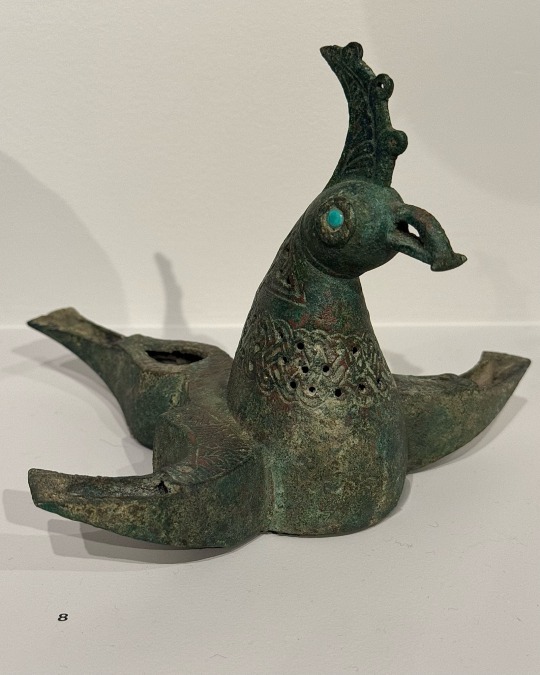
Lamp in the form of a bird, 12th c.
Persian, Iran, Khorasan province, Seljuk-Atabeg period
Quaternary alloy, cast & incised, with turquoise inlay
13.34 x 19.05 x 19.05 cm (5 1/4 x 7 1/2 x 7 1/2 in.)
On display at Harvard Art Museums
#animals in art#museum visit#birds in art#bird#lamp#metalwork#Persian art#Islamic art#medieval art#Harvard Art Museums#Metal Monday
131 notes
·
View notes
Text

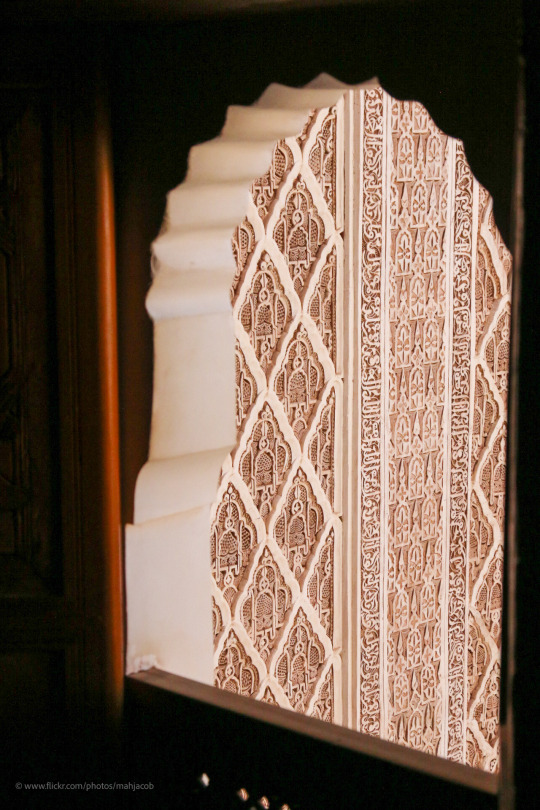


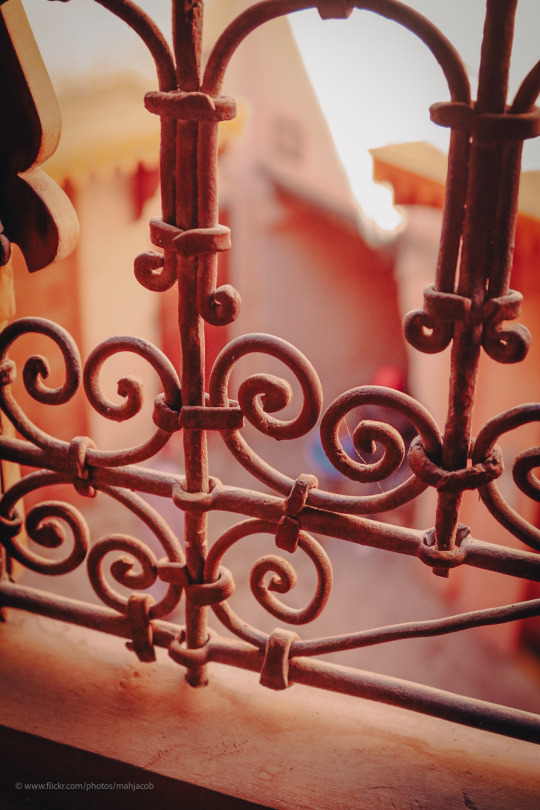
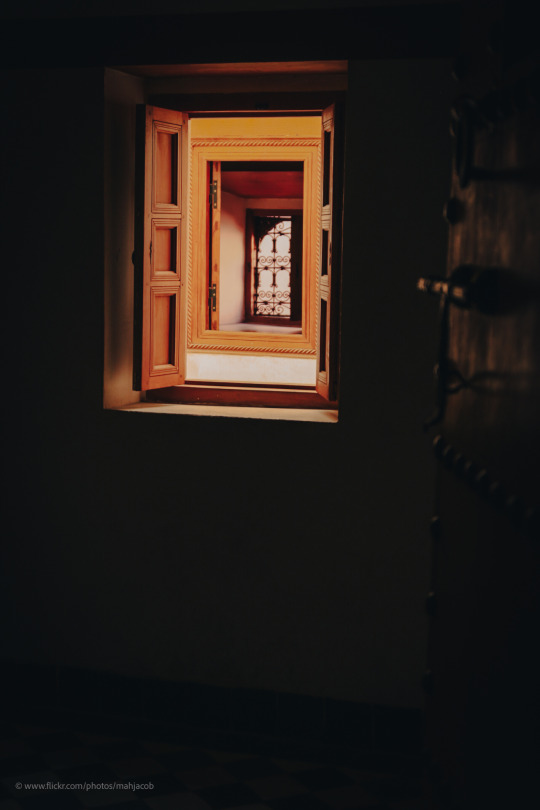
Marrocos 12.2023 (2) (3) (4) (5) (6) by Ma Jacob
#moroccan architecture#islamic architecture#archway#roaming the streets#cats#metalwork#inside a room#dim light#golden light#morocco#window view
23 notes
·
View notes
Text
The planned exhibition, Treasured Ornament: 10 Centuries of Islamic Art, features ancient and modern Islamic glassware, ceramics, metalwork, painting, weaponry and more, which the Frick said in a 3 October press release sought to invoke “the rich history of the Islamic world and the shared human experiences that bind us”.
(...) “When war broke out in the Middle East, we were as heartbroken as everyone, and we realised that we were about to open an exhibition that a forgiving person would call insensitive, but for many people, especially in our community, would be traumatic.”
5K notes
·
View notes
Photo
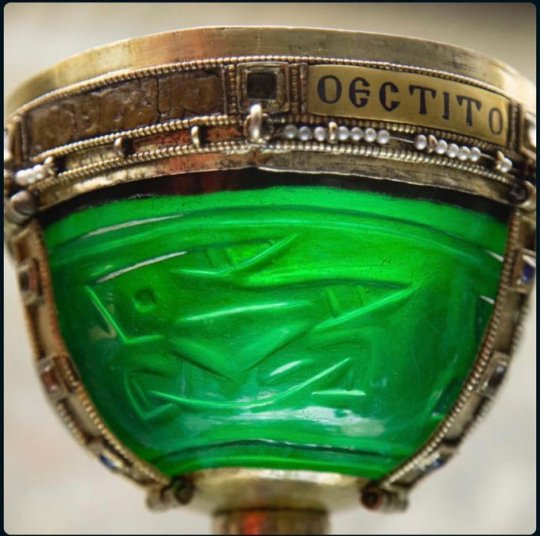
A medieval Roman chalice combining the beauty of specialized Roman metalwork with a green glass of Islamic origin - the angular depiction of a hare in the glass isn’t “Byzantine” style.
23 notes
·
View notes
Text

Frick museum in Pittsburgh postpones Islamic art exhibition over fears it would appear ‘insensitive’ or ‘traumatic’ amid Gaza war
Local Muslim and Jewish organisations have questioned the decision, suggesting it risks conflating historic Islamic art and Hamas
The planned exhibition, Treasured Ornament: 10 Centuries of Islamic Art, features ancient and modern Islamic glassware, ceramics, metalwork, painting, weaponry and more, which the Frick said in a 3 October press release sought to invoke “the rich history of the Islamic world and the shared human experiences that bind us”.
Art Newspaper >
23 notes
·
View notes
Text
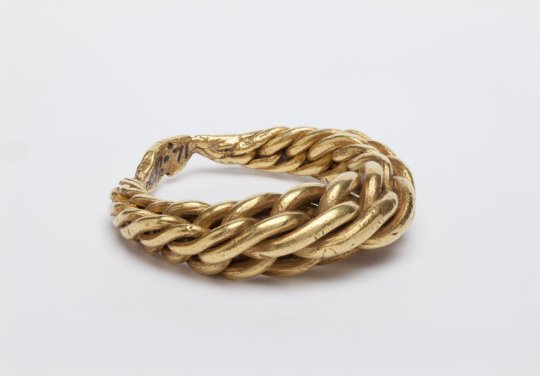
Ring
Viking, 9th century to 11th century
The Viking were the seafaring peoples of Scandinavia in the early medieval period. They were skilled metalworkers and attached a high importance to precious metals. Large hoards of coins and gold and silver jewellery have been found in Scandinavia and across northern Europe. Gold jewellery showed status and success as a trader and a raider and was worn by men and women. It could be reused as currency - for much of their history, Vikings did not have a settled currency but would use other currencies such as Islamic or Byzantine coins or pieces of gold or silver jewellery hacked into pieces and valued according to their weight. A Viking leader rewarded and retained the loyalty of his followers by gifts of gold or jewellery and by sharing the spoils of raids. Giving jewellery was both a concrete reward and an acknowledgment of the recipient's place in the social hierachy. The saga of Egil Skallagrimson describes the battles which Egil fought on behalf of the British king Aethelstan and states his pride was only satisfied by being given both the seat of honour at a feast but also a gold arm-ring, symbolically presented on the tip of a sword. Aethelstan was thereby fulfilling his role as good lord and 'ring-giver'.
13 notes
·
View notes
Text
Medina of Marrakesh

Today, let’s wander through the vibrant heart of Marrakesh, Morocco—its legendary Medina, a UNESCO World Heritage site that pulses with history, culture, and endless charm. Known as the “Red City” because of its blush-colored walls, the Medina of Marrakesh is an intoxicating blend of ancient and modern that will transport you to another world the moment you step inside.
In 1985, the Medina of Marrakesh was declared a UNESCO World Heritage site, recognizing its exceptional cultural value and its role in shaping the history of North Africa and the wider Arab world. The medina’s architecture, artistic achievements, and lively traditions reflect the rich heritage of Morocco, making it one of the most significant urban sites in the Arab-Muslim world.
The Medina of Marrakesh was founded in 1070 by the Almoravid dynasty and has been a thriving cultural and economic center ever since. This historic walled city reflects centuries of Islamic architecture and North African influence, making it a truly unique place to explore. It’s a maze of narrow streets, colorful souks, grand palaces, and tranquil courtyards that hide behind modest doors, waiting to be discovered.
At the heart of the Medina is the world-famous Djemaa el-Fna, a square unlike any other. By day, it’s a bustling market where you can find everything from fresh orange juice to intricate handicrafts. As the sun sets, the square transforms into a lively stage of traditional Moroccan culture. Snake charmers, storytellers, musicians, and food vendors fill the space with life and energy, creating an unforgettable experience.
The Koutoubia Mosque is the most prominent structure in the Medina, with its towering minaret rising 77 meters above the city. Built in the 12th century, this mosque is a masterpiece of Almohad architecture and remains one of Marrakesh’s most recognizable symbols. Although non-Muslims are not allowed inside, the beauty of its exterior and the serenity of its surrounding gardens are enough to leave you mesmerized.
The souks (markets) of Marrakesh are legendary and offer one of the most immersive shopping experiences in the world. From spices and textiles to leather goods and metalwork, the souks are packed with vibrant colors, rich scents, and the constant hum of negotiation. Getting lost in this labyrinth of stalls is part of the fun—you never know what treasures you’ll find around the next corner.

Hidden within the Medina is the Bahia Palace, an opulent 19th-century residence that showcases the best of Moroccan craftsmanship. The intricate tile work, painted ceilings, and lush gardens of the palace were designed to impress, and they do just that. It’s a serene oasis of beauty and history, offering a peaceful contrast to the bustling streets outside.
Just outside the Bahia Palace, you’ll find the Saadian Tombs, a burial site dating back to the 16th century. These tombs were lost to time for centuries, only to be rediscovered in 1917. Today, they stand as a striking example of Islamic architecture, with intricate carvings, colorful tiles, and serene gardens surrounding the resting places of Saadian royalty.
What makes Marrakesh’s Medina truly special is that it’s not a museum frozen in time—it’s a living, breathing part of daily life in the city. People still live, work, and celebrate in the Medina, which makes every visit a vibrant and dynamic experience. From rooftop cafes with sweeping views to quiet riads (traditional homes) hidden behind elaborate doors, the Medina is full of contrasts that will captivate your heart and imagination.🕌🏙️
2 notes
·
View notes
Text
Dragonar Fort.
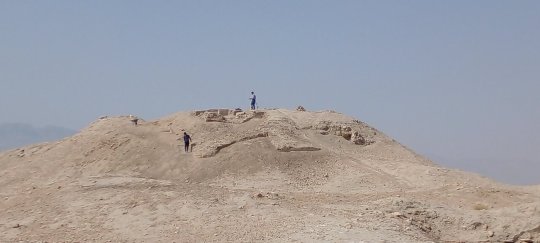
TEHRAN – A recently finished archaeological excavation,on the ruins of a massive fort is southern Iran,reveals the monument was initially used in Sassanid era and later during the early Islamic epoch up to the late Qajar era.
Covering some 20 ha in area, Qale Ezhdeha-Peykar, whose name literary translates into ‘dragon-bodied’ fort, is situated on a mound in Lar county of Fars province, southern Iran, Mehr reported on Tuesday.
The [archaeological] site consists of three ridges on the north, middle, and south, and was surrounded by a defensive wall in which watchtowers were built at regular intervals, the remains of which can be seen today.
The excavation indicates the history of settlement in this area stretches to the Sassanid era (224–651) and then it continued to be inhabited from early Islamic centuries until the end of the Qajar period (1789-1925).
Conducted under the supervision of the Research institute of Cultural Heritage and Tourism, the dig makes the first archaeological season on the fortress, the report said.
The Sassanid era (224 CE–651) is of very high importance in the history of Iran. Under Sassanids, Persian art and architecture experienced a general renaissance. Architecture often took grandiose proportions, such as palaces at Ctesiphon, Firuzabad, and Sarvestan, which are amongst the highlights of the ensemble.
Crafts such as metalwork and gem engraving grew highly sophisticated, yet scholarship was encouraged by the state. In those years, works from both the East and West were translated into Pahlavi, the language of the Sassanians.
The Sassanid archaeological landscape also represents a highly efficient system of land use and strategic utilization of natural topography in the creation of the earliest cultural centers of the Sassanid civilization.
The Muslim conquest of Persia, also known as the Arab conquest of Iran, led to the fall of the Sasanian Empire of Iran (Persia) in ca. 651 and the eventual decline of the Zoroastrian religion. The rise of Muslims coincided with an unprecedented political, social, economic, and military weakness in Persia.
In 2018, UNESCO added an ensemble of Sassanian historical cities in southern Iran — titled “Sassanid Archaeological Landscape of Fars Region”-- to its World Heritage list. The ensemble comprises eight archaeological sites situated in three geographical parts of Firuzabad, Bishapur, and Sarvestan. It reflects the optimized utilization of natural topography and bears witness to the influence of Achaemenid and Parthian cultural traditions and Roman art that later made a significant impact on the architecture and artistic styles of the Islamic era.
Source:https://www.tehrantimes.com/news/490340/Dragon-bodied-fort-in-southern-Iran-dates-from-Sassanid-era
#iran persia#Archaelogy#Excavation#Ancient Persia#Shiraz Iran#Iran Tehran#Dragon-bodied#tourism#ایران#イラン#龍の体を持つ#考古学的発掘#ユネスコ#古代ペルシャ#考古学
5 notes
·
View notes
Text
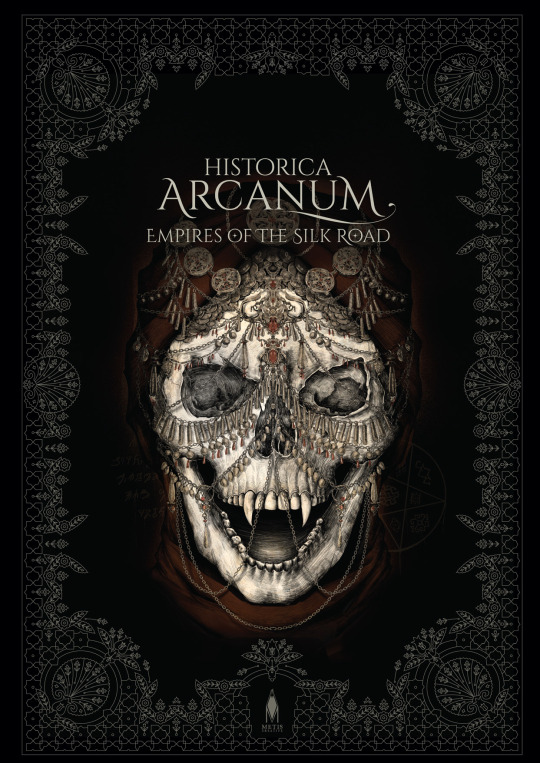
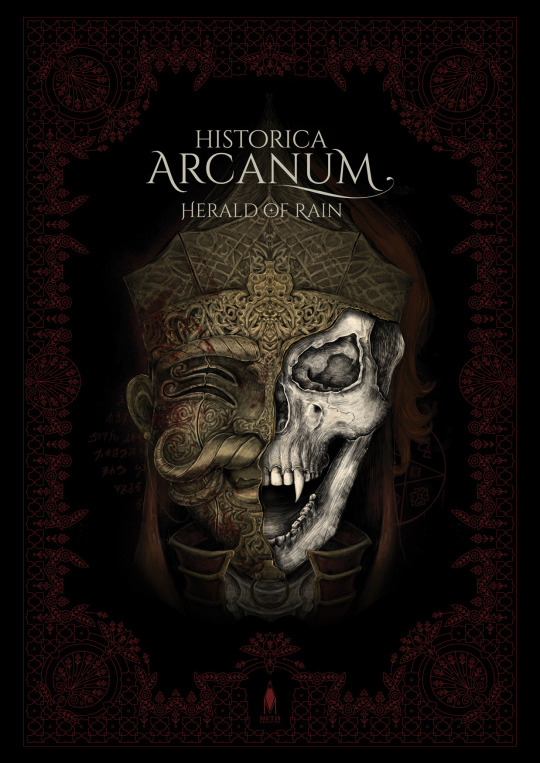
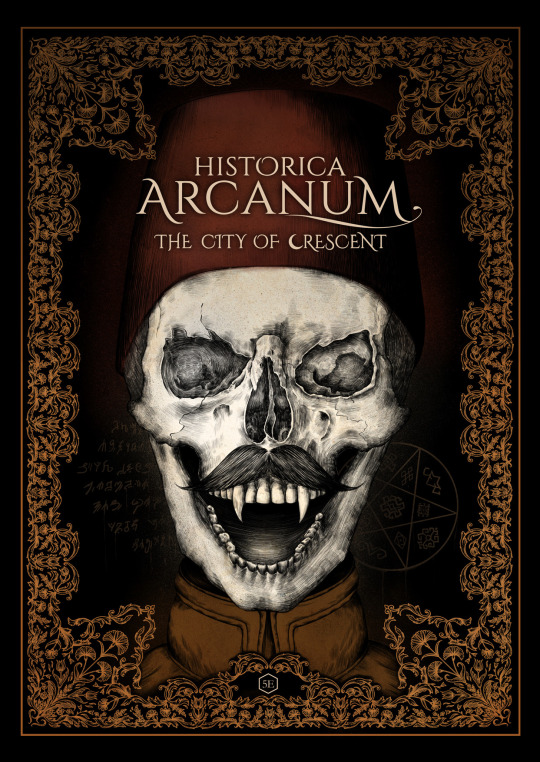
#RPGCovers Week Fourteen Historica Arcanum (2022) Yağmur Kıyak
Nothing fills me with joy right now then a new cover, out of the blue, hitting me right between the eyes. That’s what happened when I saw a new collection from the Bundle of Holding. Historica Arcanum, it turns out is an amazing looking campaign setting from a Turkish Publisher, Metis Creative.
Empires of the Silk Road and Herald of Rain offer an alternate 13th Century Silk Road designed as an open world, and an adventure designed to build up to one climactic struggle in a legendary dungeon. The City of Crescent presents an alternate 19th-Century Istanbul. Those are complemented by map packs, wallpapers, tokens, and a soundtrack album.
This is very much my jam– I loved historical sourcebooks, it covers two periods I dig, and I love Islamic history in general. It’s for D&D 5e which is not my jam, but seems easily ported over to other systems. I’d never heard of this before, but it apparently had a Kickstarter back in September 2022. It isn’t on DTRPG atm and isn’t listed in the RPGGeek Database.
But the covers. Wow. Empires of the Silk Road sets the template. We have a dark black background with striking geometrical Islamic patterning around the outside. It’s like the finest woodcut. Then there’s the skull– the top of the head vanishing under the overlay of the title. The jewelry here is ornate, elaborate and, like the page border, nearly symmetrical despite the complexity. It is such an amazing feat of draftsmanship. Then there’s the skull beneath the chains with whirlpool-like eye sockets. And then open mouth and the screaming fangs. I love that the skull image is the thing which breaks the symmetry.
One thing that you might not take in the first time you look at it: the head-scarf, the sigils to the left and the pentagram to the right.
The paired image to this is Herald of Rain, the campaign sourcebook for the setting. We have the same page border here, but done in dark red and difficult to see. But our skull face here is, in contrast, distinctly non-symmetrical, split unevenly. I love the fine detail on the metalwork of the mask. I can only assume it's a funerary one given that the eye slit doesn’t line up. Is it the mask of a Chinese lord or from some other stop on the Silk Road. Here the head scarf is replaced by flowing brown hair.
Finally, the more modern sourcebook, City of Crescent presents the border in a striking orange, but this time the border which boxes it in is thicker and more distinct. The orange here matches the tan of the uniform. The big signifier here is the fez atop the skull’s head– a sign of the 19th Century Ottoman attempts to mark themselves as modern and part of the supposedly advanced colonialist world. And, of course, there’s the characteristic mustache, out of place on a skull. I love the incongruity of that.
But that mustache does draw attention to a detail which I find striking: they’re all the same skull. I don’t know if that means anything, but I love it.
It also reminds me of the great series of covers done for the Brian Lumley Necroscope books from the 80s & 90s.
6 notes
·
View notes
Text
composite column supremacy and mosaic supremacy and Ancient Greek theater design (like hell yes let’s use a hillside for natural sightlines! Ofc we’ll avoid southern exposure and obstructions! Yk, it IS important to have enough exits!) and VOUSSOIRS with my babygirl the KEYSTONE (FUCK YEAH LET’S DISTRIBUTE THE DOWNWARD FORCES!! Jam those voussoirs next to that keystone!) Domes?!? WITH AN OCULUS AND CONCENTRIC HORIZONTAL RINGS?!? (The PANTHEON my beloved) I love you pendentives I love you squinches i love you muquarnas I love you Haiga Sophia base windows I would die for you ORNAMENTAL VAULTING of the Jamey Mosque i love you mamluk minarets and malqaf I love you beautiful DUOGONG and ritual CODING in Chinese architecture I love you flat arch of Anji Bridge I adore you Islamic arabesques and geometric patterning and pointed arch and ribbed vaults and spires and rose window (MAJOR INFLUENCE OF GOTHIC ARCHITECTURE) I love you crenellations and blind windows and colonnades and roundels I ADORE you carved stucco and wood, engraved metalwork, polychromatic tiling! I WOULD DIE FOR YOU Ardhamandpada and Mandapa and Shikhara and Amalaka and Kalaśa and Garbhagriha!! I applaud you stone glacis and arrow loops and machicolations! Goodbye blind spots!! Slay the century fortified gateways!! You go hilltop fortress cities! I love you evolution of bastions to star shaped forts! Flying buttresses can ignore the jokes bc they know how important they are!! I LOVE YOU stained glass windows! I love you soaring naves! I love you huge windows/walls of light!! I love you trifora! I love you piers! I love you corbels! I love you stone tracery! I love you crockets! I love you timber frame buildings! I lOVE you pagodas! I love you NUMEROLOGY and symbolic significance of shapes in Chinese architecture! I love you hammer frame roof! I love you rock-cut architecture! I love you thermal advantages of mud-brick buildings(REGULATE those extremes!)! I love you Yemeni construction techniques with palm trunks and protective limestone and water-repelling crushed gypsum!! I LOVE YOU banco smooth finish! I love you religious and civic PRIDE in architecture!! I love you Qinian Dian with your concentric circles and columns symbolizing months seasons and hours!! I love you fan vaulting! I love you perpendicular style! I love you Incan mortarless stonework! I love you terraces and chinampas! I love you coffered ceilings!
I DIDN’T EVEN GET TO RENAISSANCE ARCHITECTURE BUT I LOVE YOU TOO
I LOVE YOU EVERYONE WHO TOOK THE TIME TO READ THIS
IF YOU ADD PICTURES JUST KNOW I AM SPIRITUALLY KISSING YOU ON THE LIPS
4 notes
·
View notes
Text
For #NationalDolphinDay 🐬:

Hookah Base in the Shape of a Dolphin
Mughal India, 17th century
cast brass, 16.5 x 13cm
The Khalili Collections MTW 1500
“Smoking was introduced into the Mughal empire at the end of Akbar’s reign, when Asad Beg, one of his noblemen, brought tobacco and hookahs, or waterpipes, back from Bijapur in the Deccan. Asad Beg reported that tobacco was well known at Mecca and Medina and presented Akbar with a fine jewelled pipe with a mouthpiece of Yemeni carnelian. Although Akbar’s physician forbade him to smoke, the fashion for hookahs soon caught on and, as in Iran, various objects were adapted to hold the scented water through which the tobacco smoke passed. These included coconuts and various types of glass vessel, including bottles in which Dutch gin was exported, as well as spherical containers shaped like Indian waterpots [see MTW 1558]. These rested on rings or collars so that they stood upright. In addition, small hand-held hookah bases were made, some in the shape of mangoes or other fruit, or even in animal form and, as in this case, a dolphin.”
#animals in art#animal holiday#Islamic art#Mughal art#Indian art#South Asian art#Asian art#17th century art#brass#metalwork#hookah base#dolphin#National Dolphin Day#The Khalili Collections
16 notes
·
View notes
Text
Ancient Iranian Peopel: Sogdians

The Sogdians were an ancient Iranian people who inhabited the region of Sogdiana, which is located in present-day Uzbekistan and Tajikistan. They played a significant role in the cultural and economic exchanges along the Silk Road, serving as intermediaries between the East and the West.
Here are some key points about the Sogdian people:
History: The Sogdians were part of the larger Iranian peoples and had a rich history that dates back to at least the 6th century BCE. They established city-states in the fertile valleys of Central Asia, forming a prosperous and cosmopolitan society.
Silk Road Traders: Sogdiana was strategically located along the Silk Road, the ancient trade route that connected China to the Mediterranean. The Sogdians became renowned traders, controlling key points along the route and facilitating the exchange of goods and ideas between the East and the West. They played a vital role in the transmission of Chinese, Indian, Persian, and Hellenistic cultures.
Economic Power: The Sogdians accumulated substantial wealth through their involvement in trade. They specialized in long-distance commerce, transporting goods such as silk, spices, precious stones, and other luxury items across vast distances. Their mastery of commercial networks and languages allowed them to establish thriving trading colonies and to dominate the Silk Road's commerce.
Cultural Influences: The Sogdians were not just traders but also cultural intermediaries. They adopted and transmitted various cultural influences from different regions they encountered, blending elements of Persian, Hellenistic, Indian, and Chinese cultures. Sogdian art, language, and religious practices, including Zoroastrianism and later Buddhism and Manichaeism, were strongly influenced by these interactions.
Sogdian Art and Writing: Sogdian artists were renowned for their exquisite artwork, particularly in metalwork, painting, and ceramics. They created intricate and vibrant motifs that incorporated both local and foreign influences. The Sogdians also developed their own script, known as the Sogdian script, which was an important precursor to the Uighur script used in Central Asia.
Decline: The Sogdian civilization faced significant challenges over time. In the 8th and 9th centuries, Arab Muslim conquests swept through the region, leading to the decline of Sogdiana as a political and economic power. The gradual Islamization of the area further eroded Sogdian culture and traditions.
Today, the Sogdians and their civilization are no longer in existence, but their legacy lives on through archaeological discoveries and ancient texts. The study of Sogdiana and its people provides valuable insights into the complexities of cultural exchange and the historical significance of the Silk Road.
Read More About Sogdians:
Ancient Iranian Language: Sogdian
Follow my YouTube channel. Silent tablets documentary, short videos from ancient history.
Follow my Twitter.
#ancient mesopotamia#mesopotamia#archaeology#ancient history#iranian#ancient iran#iranian languages#iran#iranian peopel#sogdian language#sogdian#tajikistan#uzbekistan
4 notes
·
View notes
Text
Introducing The Silk Road
by Anshad M.

The Silk Route was a network of ancient commercial routes that connected Asia with the Mediterranean, passing through China, India, Persia, Arabia, Greece, and Italy. From the second century B.C. to the fourteenth century A.D., it accelerated the exchange of goods, ideas, languages, culture, art, and religious beliefs across various civilizations. It was given the name Silk Route due to the extensive silk trade that took place at that time and China held a monopoly on the production of this priceless fabric since the production technique was unknown to other countries.
Along with silk, the route aided in the trade of various fabrics, precious stones, grains, fruits, and vegetables, as well as hides from animals and other valuables like wood and metalwork. The economic conditions of the regions were also improved by export and import along the route.
Travellers used horse or camel caravans and lodged at guest homes or inns that were usually spaced by one day of travel. Ports along the Silk Route's maritime routes offered trade opportunities and fresh water for drinking. The most contemporary Silk Road travellers have been archaeologists and geographers who are studying ancient sites.
This trade network covered more than 4,000 miles of land and water routes. It mainly comprised two major routes, one connecting China to Central Asia and the other the West and Central Asia and the markets and trading posts along the Silk Road made it easier to exchange, transport, store, and distribute goods. It was the most active trade route in ancient times. In a short time, it evolved into a crucial component of the geopolitical and economic system that every state wanted to control.
History
The Silk Road was officially opened by Zhang Qian, a Chinese diplomat who served in the Han period. In 138 B.C., the Han emperor Wu asked him to oversee cultural exchange with Central Asia. It was one of the first attempts to encourage scholarly exchange between the East and Europe. But historical evidence indicates that the road was in use as a commercial route far earlier. Later, Qian expanded these routes in Central Asia through military conquests and travels.
During the Tang Dynasty, its land and sea routes were the finest for trade (618-907 A.D.). But due to shifts in the Chinese leadership, its boundaries were constantly changing. Starting in Xi'an, the route followed the Great Wall of China. It then passed across the Taklamakan Desert and the Pamir Mountains before passing via Afghanistan to the Levant. The rest of the Silk Road's trade was then carried through the Mediterranean Sea. For traders, the Levant was dangerous because of the distance, the growth of Arabian dominance, and the prevalence of bandits there. In the 13th century, the Mongols brought the route back to life and made it safer for traders.
Cultural Significance of the Silk Route
The network of trade routes paved the way for cross-regional trade. It also promoted the exchange of culture, language, religion, art, philosophy, science, and technology beyond national boundaries. For instance, Buddhism and Nestorian Christianity were introduced to China along the Silk Road.
Through this approach, other religions such as Hinduism, Christianity, and Islam were also transmitted between civilizations.Thus, it helped in establishing international long-distance economic and political relationships. Unfortunately, pandemics like the bubonic plague were also propagated through this commercial and cultural exchange network.
Travel on the Silk Road
Traders had to find proper means of transporting their goods. The camel was the preferred means of transportation for overland journeys. From the second millennium BCE forward, nomadic peoples in central Asia began domesticating camels. For instance, the Han Chinese transported war supplies on camels they had taken from the Xiongnu. Camels could carry up to 500 pounds at once and could survive the severe desert conditions in Central Asia. Pack animals, particularly camels, made it possible to move commodities over land on the Silk Road.
The ocean was also used for the transportation of goods by merchants and sailors. To properly navigate the waters, sailors required a solid knowledge of wind direction and storm systems. For instance, monsoon winds in the Indian Ocean originate from the southwest during the summer and the northeast during the winter. Merchants could sail from the Red Sea between Egypt and Arabia toward India in the summer and back to the Red Sea in the winter with the southwestern breeze that pushed them east. The sailors shared this information, and it spread beyond the Indian Ocean.
Four Pathways which connected India with Silk Roads
1. The route via the high Tibetan plateau leads to Sravasti beside the Ganges.
2. The Road leads to the Ganges' fertile valleys via the mountains and valleys of western Nepal.
3. The Silk Roads crossed the Western Himalayas via the Karakoram via Srinagar, Leh, and Sangju Pass.
4. The road down the Ganges – Delhi to Chandraketugarh in West Bengal.
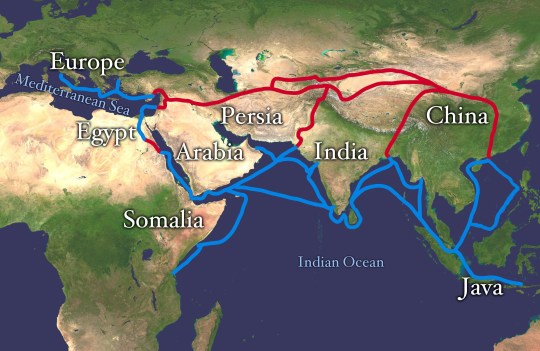
2 notes
·
View notes
Text

ಬಿದರೀ ತಟ್ಟೆ
A magnificent specimen of Bidriware at the Museum of Fine Arts, Boston, MA.
Tray India (Deccan), 17th century, Metal alloy with silver and brass inlay The bold contrasts of the pattern on this tray are typical of bidriware, a type of metalwork that and probably originated in the Islamic kingdoms of central India known as the Deccani sultanates. Bidriware objects graced the reception and private rooms of Deccani as well as Mughal elites. Trays like this one would have held a hookah and related accoutrements.
#iPhone#iPhone13Pro#museum#art#Museum of Fine Arts#Boston#Massachusetts#USA#Bidar#Karnataka#India#looking down
0 notes
Text

Abu Dhabi City Tours: Exploring the Heart of the UAE - Desert Safari Dubai Adventures
Abu Dhabi City Tours UAE, the capital of the United Arab Emirates (UAE), is a city where tradition meets modernity, offering a fascinating blend of rich cultural heritage and cutting-edge architecture. From its pristine beaches and luxurious resorts to its awe-inspiring mosques and cultural landmarks, Abu Dhabi City Tours UAE is a destination that offers something for every traveler. Whether you're a history enthusiast, an adventure seeker, or someone looking to unwind, an Abu Dhabi City Tours UAE is a must-do experience. Here's a guide to what you can expect when exploring this vibrant city.
Sheikh Zayed Grand Mosque: A Modern Architectural Marvel
One of the most iconic landmarks in Abu Dhabi, the Sheikh Zayed Grand Mosque is a masterpiece of modern Islamic architecture. With its stunning white marble domes, intricate floral designs, and expansive courtyards, the mosque is a symbol of peace and unity. Visitors can marvel at the world's largest hand-knotted carpet, the grand crystal chandeliers, and the serene reflective pools that surround the mosque. This is not just a place of worship but also a place of learning, where visitors can gain insight into Islamic culture and values.
The Louvre Abu Dhabi: Art and Culture Hub
Art lovers will find paradise at the Louvre Abu Dhabi, a museum that bridges the gap between Eastern and Western art. The museum's stunning architecture, designed by Jean Nouvel, features a massive dome that creates a "rain of light" effect, making it a visual delight. Inside, the Louvre Abu Dhabi houses an impressive collection of artworks and artifacts from around the world, including pieces from ancient civilizations, Islamic art, and contemporary masterpieces. It's a cultural journey that transcends time and geography.
Heritage Village: A Glimpse into the Past
For those interested in the UAE's rich history and culture, a visit to the Heritage Village is essential. This reconstructed village offers a glimpse into the traditional Bedouin way of life, complete with mud-brick houses, a souk (market), and workshops where artisans demonstrate traditional crafts such as pottery, weaving, and metalwork. The Heritage Village also features a small museum displaying historical artifacts, providing visitors with a deeper understanding of Abu Dhabi's transformation from a small fishing village to a modern metropolis.

Conclusion - Abu Dhabi City Tours UAE
Abu Dhabi City Tours UAE that offers a unique blend of tradition and modernity, making it a destination that appeals to travellers of all interests. Whether you're exploring its grand mosques, enjoying its world-class entertainment, or delving into its rich cultural heritage, an Abu Dhabi City Tours UAE is an experience that will leave you with lasting memories. So, pack your bags and get ready to discover the wonders of this remarkable city.
Call or whatsApp 24/7 on: 📞 00971 55 553 8395
E.mail: [email protected] Details: https://desertsafaridubaiadventures.com/
#DesertSafariDubai#DubaiAdventureSafaris#desertsafari#desert#safaridubai#dubai#BestPopularTourDealsInDubai#DesertSafariinDubai#2024DealsandPackagePrice#DesertSafariAdventure#AdventurousArabianTours#DubaiAdventures#AuthenticDesertSafariExperience#DesertSafariinDubai2024#desertsafariuae#desertsafaridubaiuae#desertadventures#uae#viralpost#trendingpost#foryoupost#fyp#dubaiservice#DealsandPackagePrice#DesertSafariDubaiAdventures#DubaiAdventuresAuthentic#DesertSafariExperience#DesertSafariAdventures
0 notes
Text
19th Century Saracenic Interior Design for Bedrooms

Accent pieces are crucial in perfecting Saracenic Interior Design for Bedroom. Consider adding decorative items such as vases, pottery, and intricate metalwork to introduce texture and detail. Incorporating traditional Islamic calligraphy or patterns can enhance the cultural depth of the room. Additionally, using screens or dividers with carved or lattice designs can create a visually stunning focal point while preserving a sense of privacy, all contributing to the rich and elegant ambiance of Saracenic Interior Design for Bedroom. Discover the full blog to get more insight about Saracenic Interior Design for Bedrooms.
#Saracenic Interior Design for Bedrooms#bedroom design ideas#best interior designers in dubai#residential interior design dubai#professional interior designer
0 notes